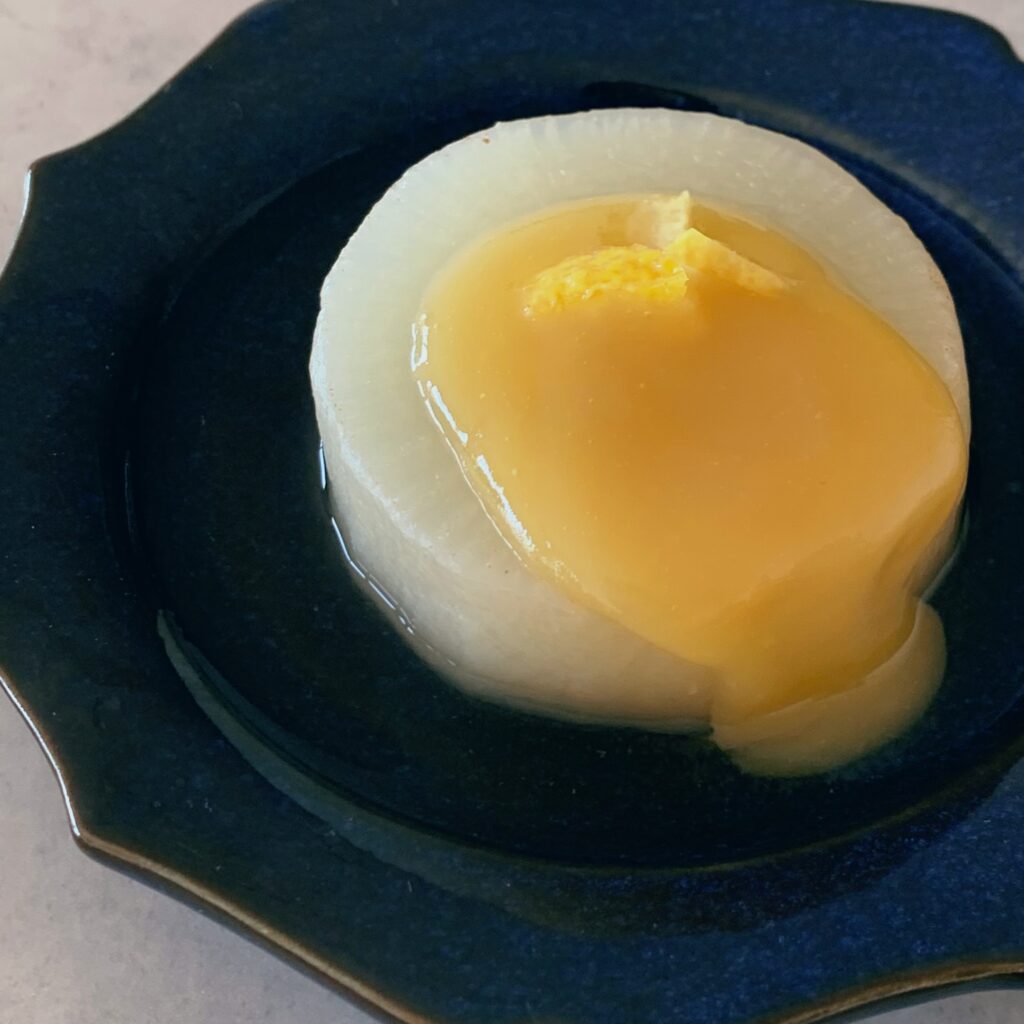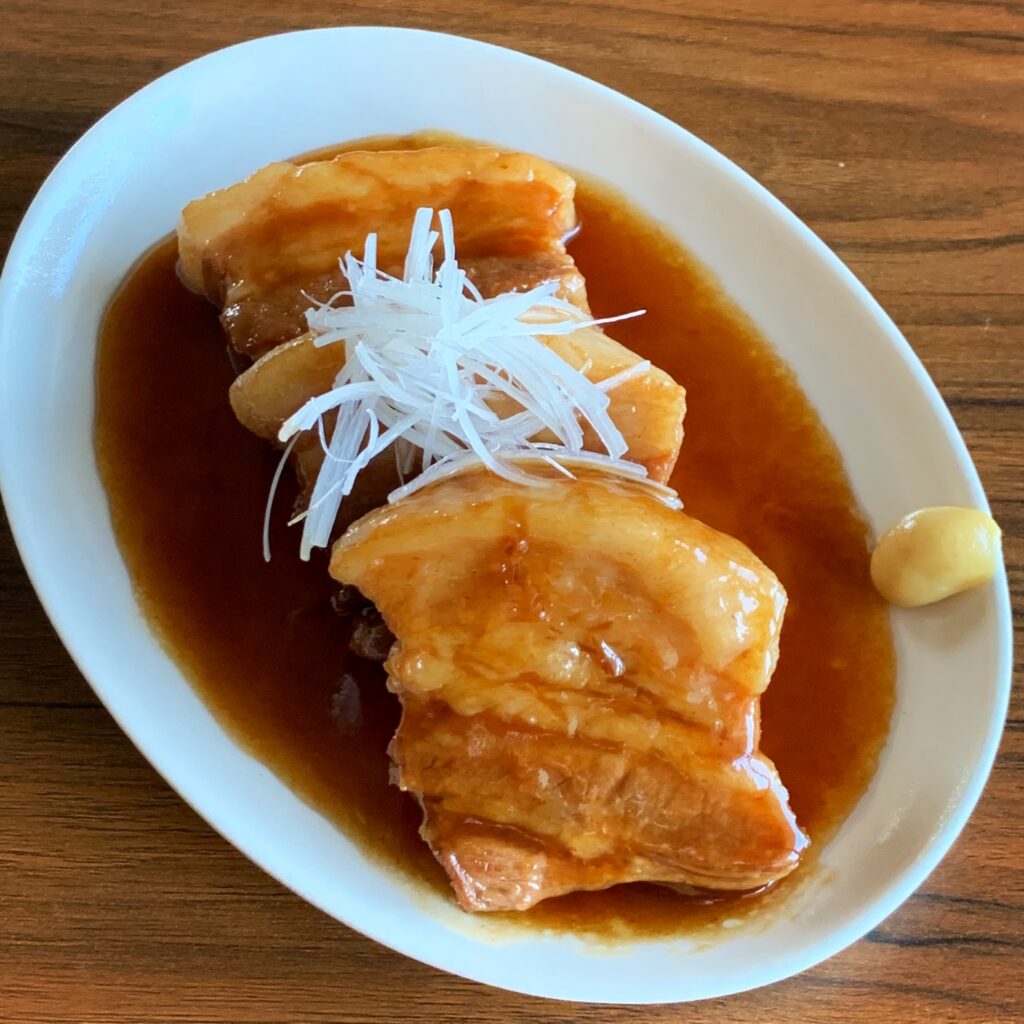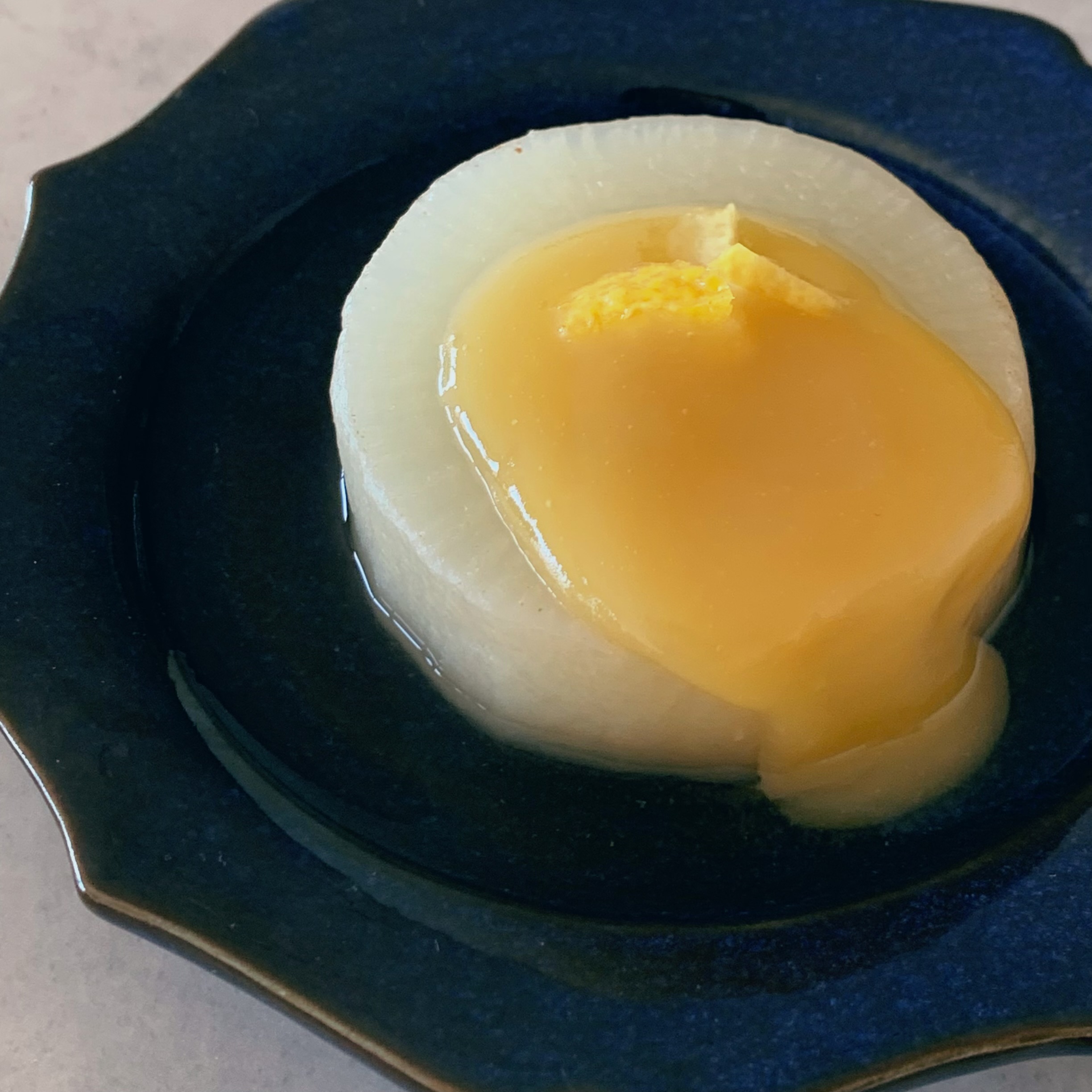
Furofuki daikon(ふろふき大根)
What kind of dish is Furofuki daikon⁇
A dish of daikon radish simmered in dashi soup until tender, then topped with mellow yuzu miso.
Oden and furofuki daikon are eaten while the ingredients are still hot, blowing on them to cool them down. It’s a pleasure to eat hot food to warm up your body during cold weather.
The name “Furofuki=風呂吹き” comes from the fact that the way you blow while eating the food resembles the act of burning firewood in traditional baths.
bath=furo(風呂),breathe out with a whoosh=fukikakeru(吹きかける)
This recipe uses dashi stock granules for easy preparation, but if you want to make a more authentic version, use homemade dashi. Dashi stock granules contain salt, so if you use homemade dashi, add 1 tablespoon of light soy sauce. See this article for how to make dashi. 👉 Sumashijiru is a simple yet elegant Japanese clear soup.

The pressure cooker I use is a T-fal “Clipso Minut Easy”. The content is 4.5L. Check out this article about pressure cookers. 👉 Butano kakuni (Japanese Braised pork belly recipe)

What kind of food is daikon radish??
The upper part of the radish has a sweet taste because it has a high water content and is rich in nutrients such as starch made from the radish leaves. Therefore, it is best to use the upper half of the radish for simmered dishes.
Additionally, the upper part of radish contains a large amount of protease, a protein degrading enzyme, and diastase, a digestive enzyme, which helps control gastrointestinal function and aids in digestion.
The closer it is to the bottom, the more it contains isothiocyanate, which is the spicy ingredient. This isothiocyanate has antioxidant properties and is sensitive to heat, so it is recommended to grate it and eat it with fish or meat.
For this dish, use the top or center of the daikon radish, which is soft and sweet.
NUTRITION FACTS : Furofuki Daikon With Yuzu Miso Sauce
306 kcal Protein 8.7g Fat 3.4g Carb 64.3g Salt Equivalent 14.2g
INGREDIENTS : Furofuki Daikon With Yuzu Miso Sauce
- Japanese daikon radish 350g
- ☆water 800g
- ☆dashi stock granules 5g
- ☆salt 4g
- ☆sugar 4g
- ☆light soy sauce 15g
- ★white miso 50g
- ★sugar 30g
- ★water 30g
- ★yuzu juice 5g

I like to use white miso for furofuki daikon (´³`)♡ Fundokin’s miso and soy sauce are delicious. Check it out.👉https://www.fundokin.co.jp
How to make Furofuki Daikon With Yuzu Miso Sauce
① Cut the Japanese daikon radish into 3cm thick pieces.
② Place water, dashi stock granules, salt, sugar, light soy sauce, and Japanese daikon radish in a pressure cooker.
Make sure to keep the amount of water so that the radish doesn’t get too salty.
③ Pressurize for 7 minutes. Wait until the pressure releases naturally.
If you don’t have a pressure cooker, put the rice and daikon radish in a pot and simmer for 30 minutes, then add the dashi soup and seasonings and simmer for 30 minutes.
④ Add white miso, sugar, water, and yuzu juice to a pot and simmer over low heat until thickened.
⑤ Place miso on the Japanese daikon radish.



コメント